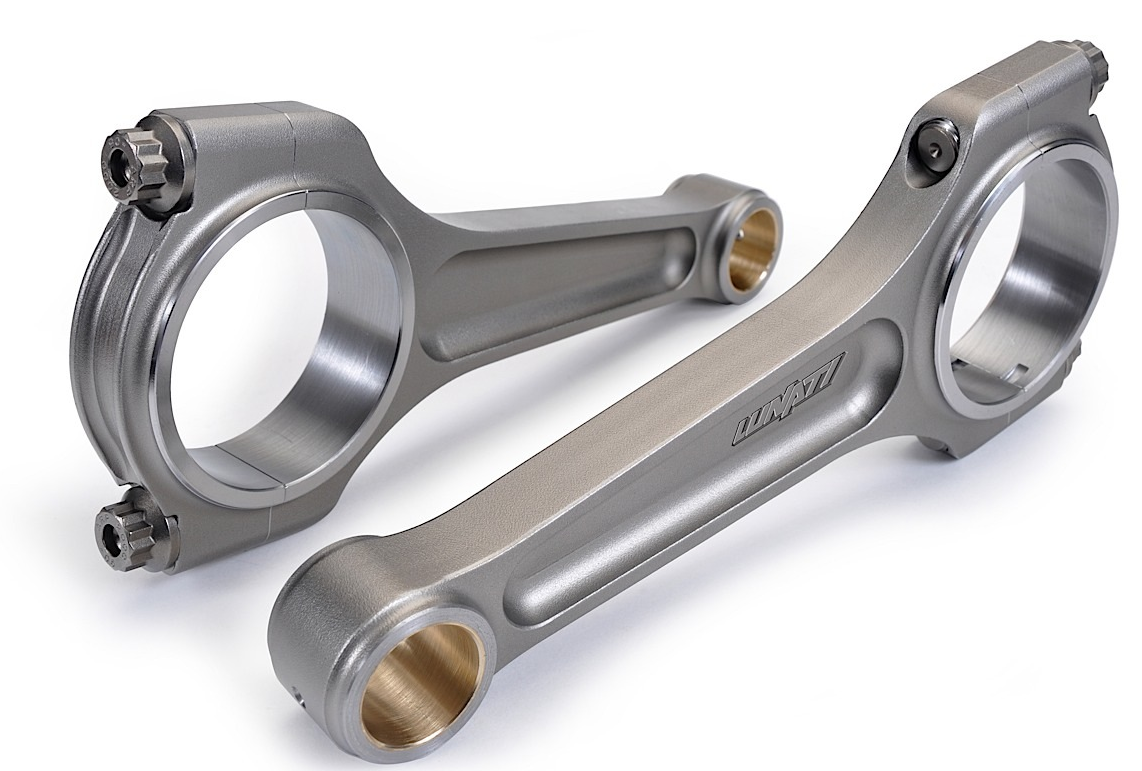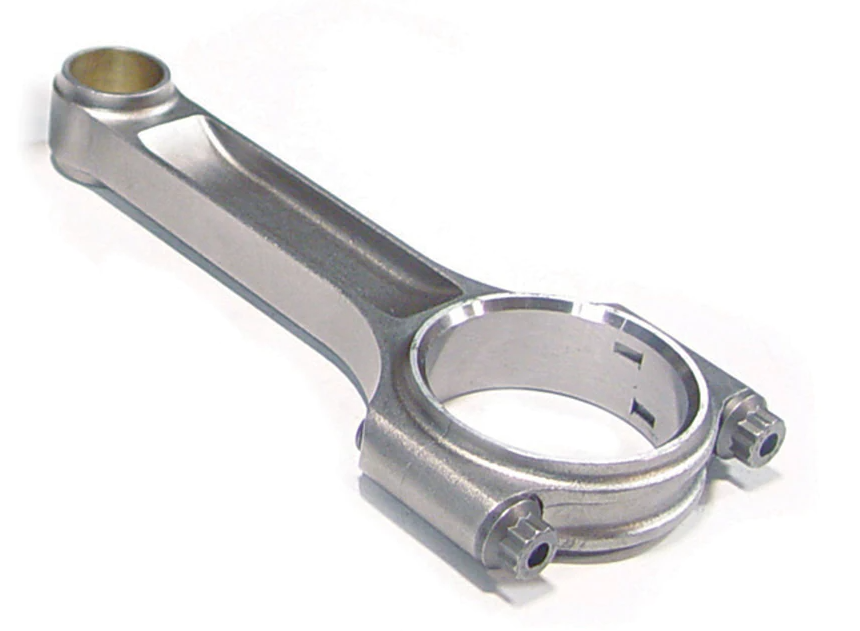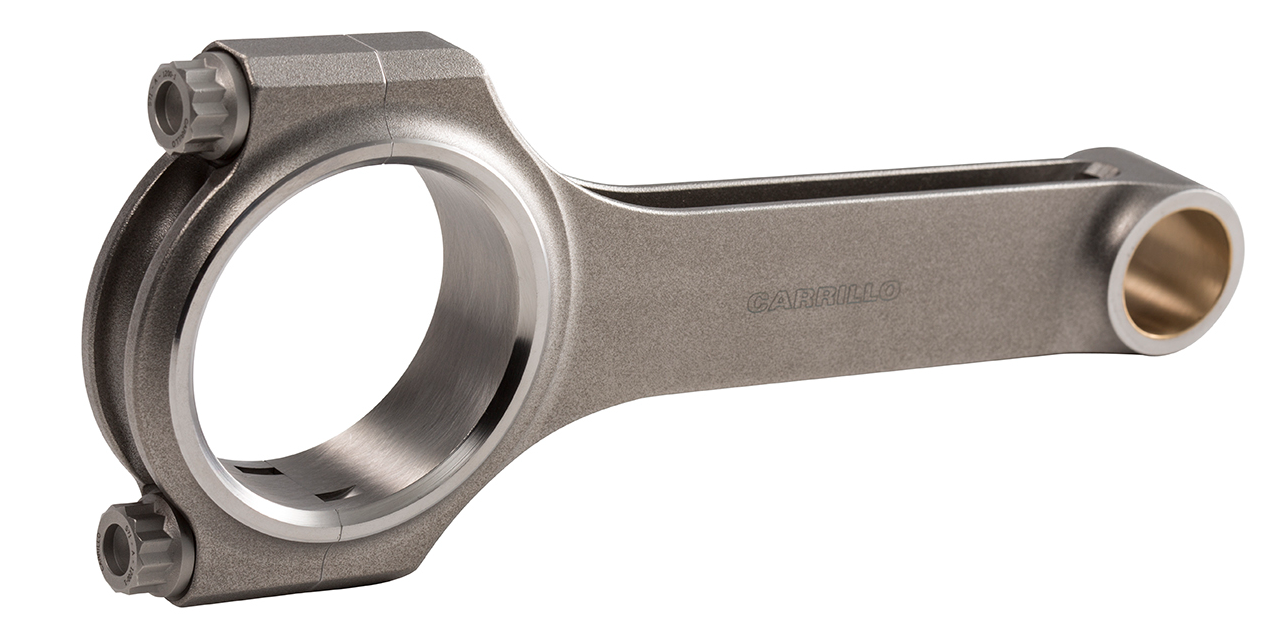Best Material for a Connecting Rod depends on the specific requirements of the engine and its application.
Steel, aluminum, titanium, and composite materials all have their benefits and drawbacks, and the optimal choice depends on a balance of factors including strength, weight, thermal and corrosion resistance, and cost.
For instance, while steel might be an excellent choice for a heavy-duty vehicle due to its strength and durability, aluminum might be a better choice for a passenger vehicle where weight and fuel efficiency are more critical.

Introduction
The purpose and selection of materials for connecting rods are central topics when discussing engine design and performance.
Purpose of a Connecting Rod
A connecting rod is a crucial component in many mechanical systems, most notably in internal combustion engines. Its primary function is to transmit force from the piston to the crankshaft, transforming the reciprocating motion into rotation. This rotation is what ultimately powers the vehicle or machinery. Therefore, a connecting rod’s performance and reliability directly impact the overall functionality and efficiency of an engine.
The Importance of Material Choice in Connecting Rods
Selecting the right material for a connecting rod is a balance of various factors such as strength, weight, durability, and cost. Different materials will perform differently under operational stresses, and their properties can significantly influence the rod’s lifespan and the engine’s performance. From traditional metals like steel and aluminum to more modern materials like titanium and composite materials, the choice of connecting rod material can dramatically affect the overall performance of the engine.
Different Materials Used for Connecting Rods
The choice of material for a connecting rod is usually determined by its intended application. Here are some of the most common materials used.
Steel
Steel has long been a popular choice for connecting rods due to its excellent tensile strength, durability, and affordability. Particularly,These rods are resilient and reliable, making them ideal for heavy-duty or high-performance applications.
Aluminum
Aluminum connecting rods are much lighter than their steel counterparts, which can lead to increased engine efficiency. They also have good thermal conductivity, making them excellent at heat dissipation. However, aluminum rods are generally not as strong or durable as steel, which can limit their use to less demanding applications or those where weight reduction is a priority.
Titanium
Titanium connecting rods combine the strength of steel with the lightweight nature of aluminum. This makes them desirable in high-performance applications, such as racing engines, where both strength and weight are crucial. However, the high cost of titanium often restricts its use to specialty or high-end applications.
Composite Materials
Composite materials, like carbon fiber composites, are a newer entrant to the field. These materials can offer a high strength-to-weight ratio, excellent thermal resistance, and decreased vibration.
Evaluation of Different Materials
A systematic approach to comparing different materials for connecting rods should take into account a variety of key factors.
Material Strength
The strength of the material used for a connecting rod is crucial to withstand the forces exerted during operation. High-strength materials like steel and titanium offer excellent resistance to deformation and failure. Composite materials, depending on their makeup, can also provide significant strength, although their use in connecting rods is not yet widespread.
Weight and Inertia
The weight of the connecting rod impacts the overall efficiency of the engine. Lighter materials like aluminum and titanium can reduce the inertia of the engine components, leading to increased responsiveness and fuel efficiency. However, the reduction in weight should not compromise the strength and durability of the rod.
Thermal and Corrosion Resistance
Connecting rods operate in harsh conditions and must withstand high temperatures and potential corrosion from various engine fluids. Materials like aluminum, with good thermal conductivity, can help dissipate heat effectively. Also, some composite materials can offer excellent thermal and corrosion resistance, making them a promising choice for future applications.
Cost-effectiveness
While performance is a critical consideration, the cost-effectiveness of the material also plays a role in its selection. Traditional materials like steel and aluminum are often less expensive and easier to manufacture into connecting rods than more specialized materials like titanium or composites. However, in high-performance or specialized applications, the benefits of these more costly materials may outweigh their higher initial cost.
The Use of Connecting Rod Materials in Different Applications
The choice of material for connecting rods can vary greatly depending on the industry and specific application.

Automotive Industry
In the automotive industry, both steel and aluminum connecting rods are commonly used. Steel rods, due to their strength and durability, are often found in heavy-duty vehicles and high-performance engines. On the other hand, aluminum rods, with their lighter weight, are frequently used in standard passenger vehicles where fuel efficiency is a major consideration. Titanium rods, while superior in performance, are mostly used in high-end or racing cars due to their higher cost.
Aerospace Industry
In the aerospace industry, weight is a critical factor, leading to a preference for lightweight materials like titanium and composites. These materials offer the necessary strength while reducing the weight of the engine components, a crucial aspect for fuel efficiency and overall aircraft performance.
Industrial Machines
In industrial machinery, the choice of connecting rod material often comes down to a balance between performance requirements and cost-effectiveness. Steel, with its high strength and relatively low cost, is a popular choice for many industrial applications.
Recent Advances in Connecting Rod Material Technology
The realm of connecting rod materials has been evolving, with research and development leading to advances in both material and manufacturing technology.

New Material Developments
The quest for the ‘ideal’ connecting rod material has led to the exploration of new materials. Composite materials, particularly carbon fiber composites, have gained attention due to their excellent strength-to-weight ratio and thermal properties. Additionally, advancements in metal alloys, like high-strength steel and aluminum alloys, have resulted in materials with improved performance characteristics, offering more choice and flexibility in connecting rod design.
Advances in Manufacturing Processes
Simultaneously, advances in manufacturing processes have opened up new possibilities for connecting rod production. Powder metallurgy has become a popular method for creating high-strength steel and aluminum connecting rods, offering potential cost and efficiency benefits. Additive manufacturing, or 3D printing, has also shown promise, particularly for complex composite materials or designs that are difficult to achieve through traditional manufacturing methods. These advances are helping to broaden the possibilities for connecting rod design and performance.
Selecting the Best Material for a Connecting Rod
The choice of material for a connecting rod is a critical decision that can affect the performance, efficiency, and lifespan of an engine.
Factors to Consider
These include the strength of the material, its weight and inertia, thermal and corrosion resistance, and cost-effectiveness. The specific application of the engine, such as whether it’s for a standard passenger vehicle, a heavy-duty truck, a racing car, or an aircraft, will also significantly influence the choice of material. The decision is often a trade-off between these different factors. For instance, while a titanium connecting rod might offer superior performance, its high cost might make a steel or aluminum rod a more practical choice for certain applications.
Expert Opinions
There is no universally “best” material for connecting rods – the optimal choice depends on the specific application and performance requirements. It’s always wise to consult with industry experts, manufacturers, and engineers when making such decisions. They can provide guidance based on their experience and the latest advancements in material science and manufacturing technology.The field continues to evolve, and staying updated with the latest developments can lead to more informed and effective decisions.
Referensi
- Connecting rod – Wikipedia
- Strength of materials – Wikipedia
- Steel – Wikipedia
- Aluminium – Wikipedia
- Titanium – Wikipedia
- Corrosion – Wikipedia
- Automotive industry – Wikipedia
- Aerospace industry – Wikipedia
- High-strength low-alloy steel – Wikipedia
- Aluminium alloy – Wikipedia